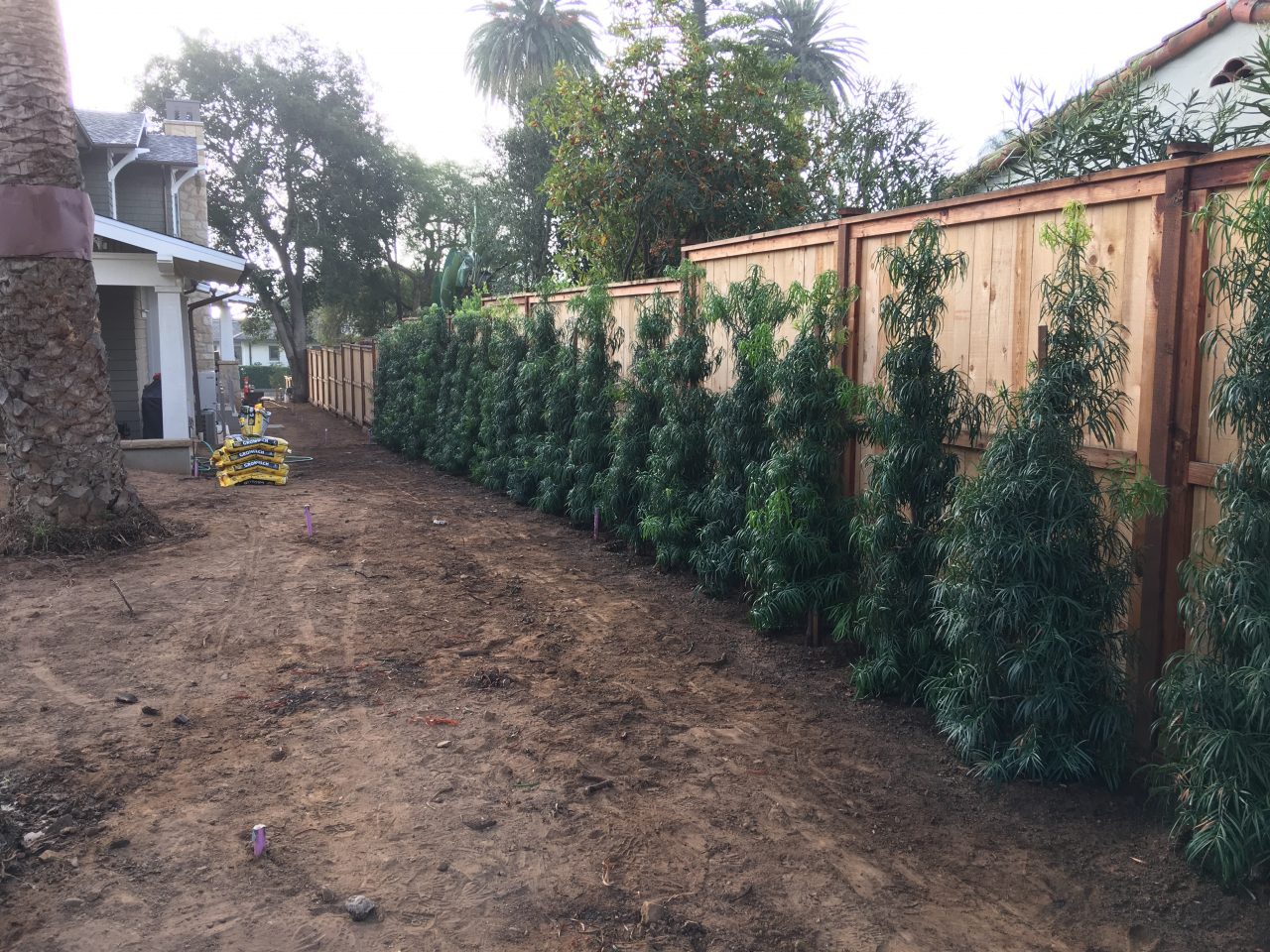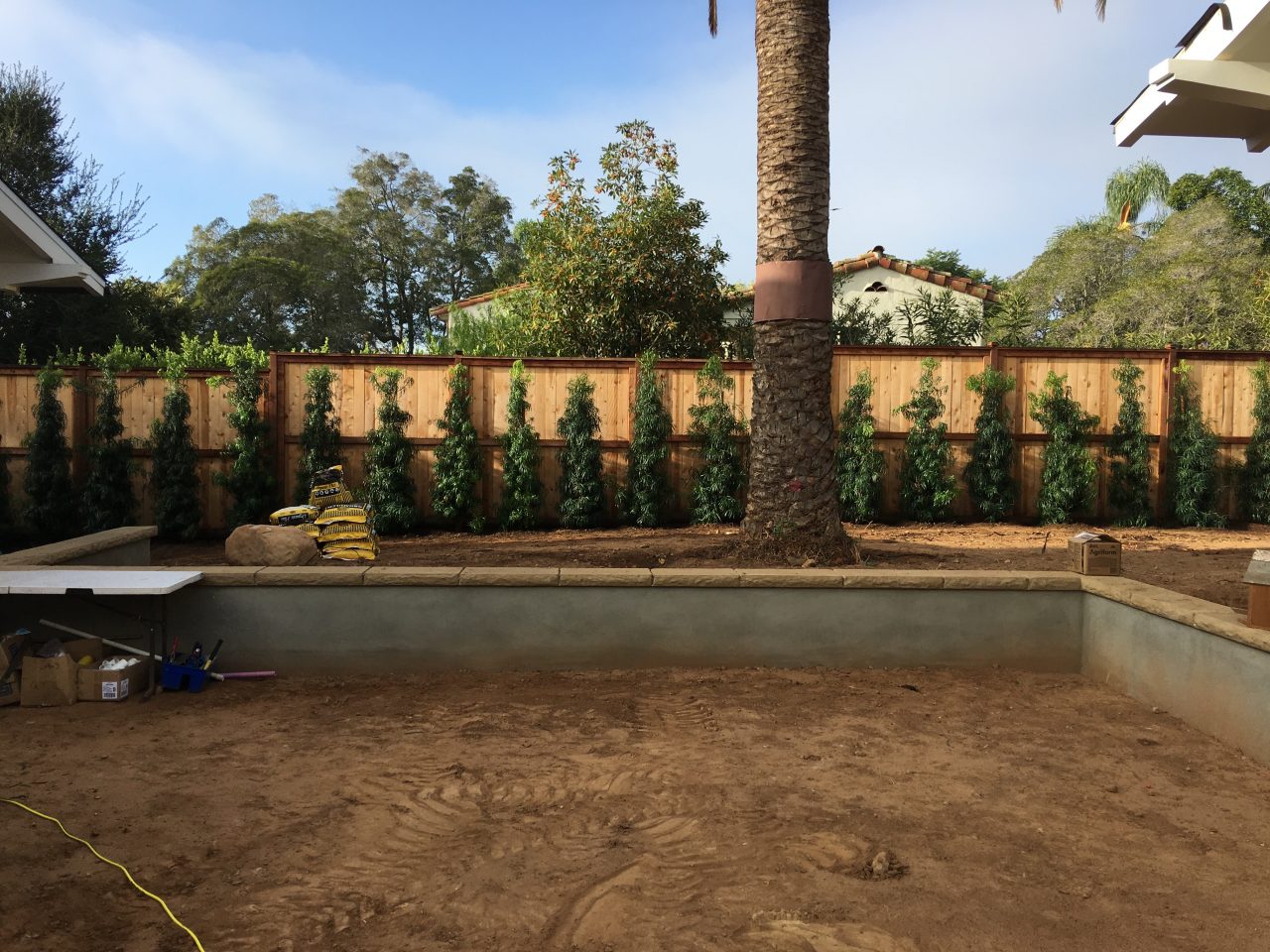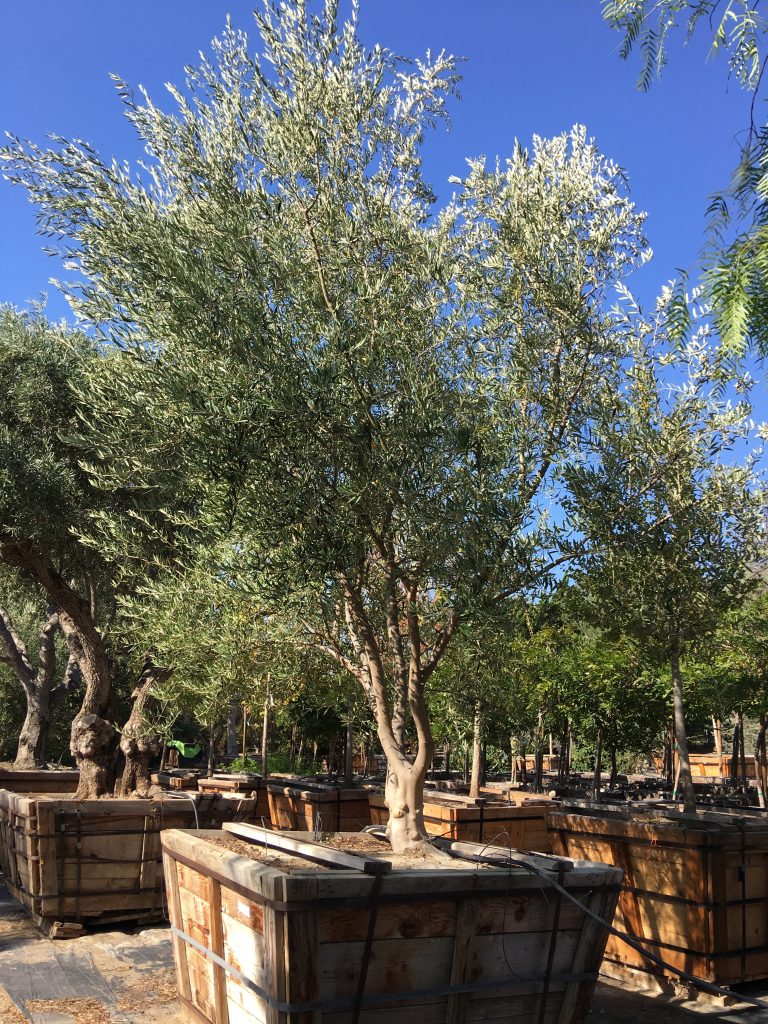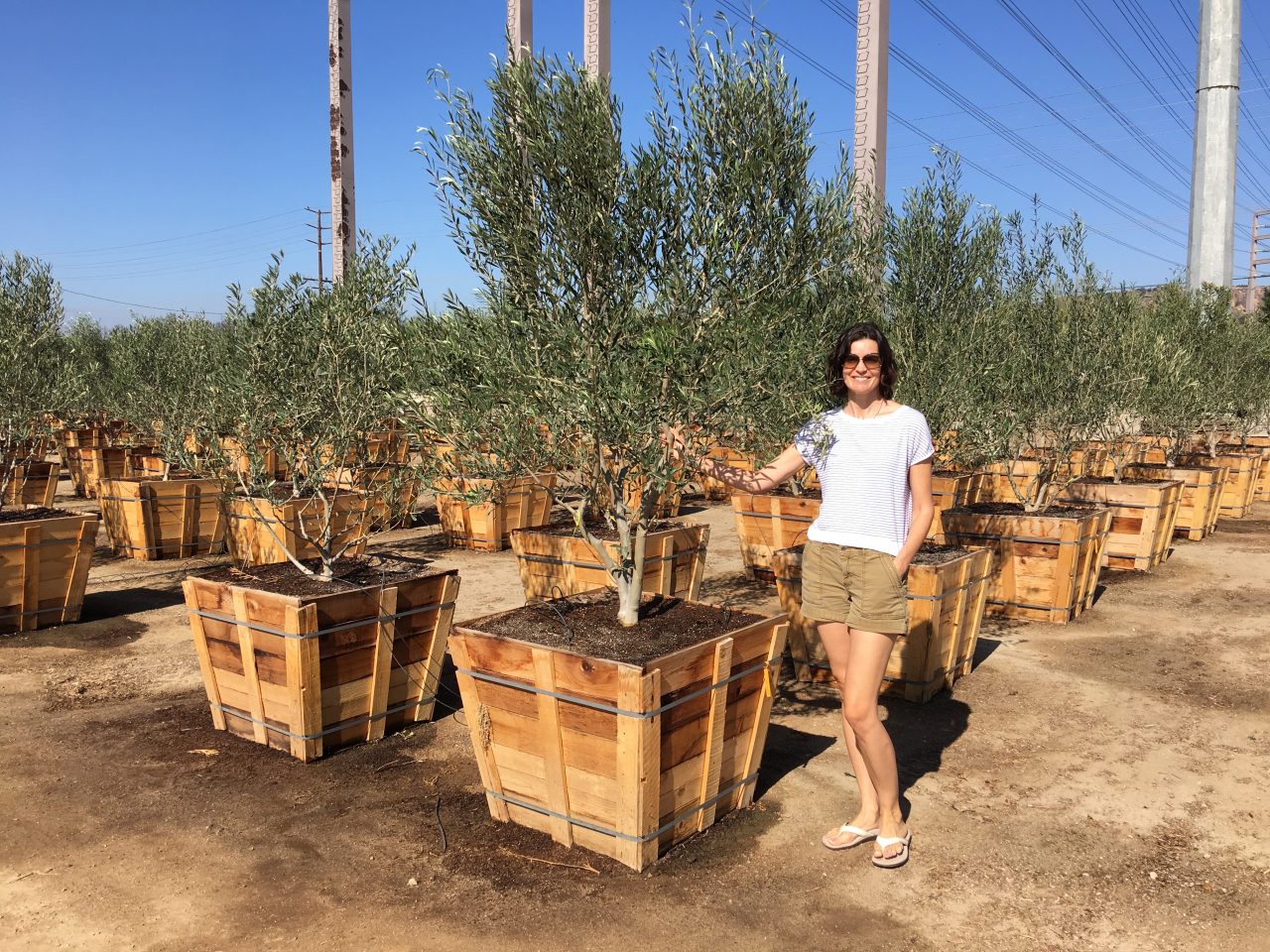We’ve got the first of our landscaping installed, with the hedges and trees around most of the property line installed now.


The hedges above are a variety called podocarpus henkelii. It is a somewhat slower growing hedge, but is very dense, and will not grow overly thick. Over time, it will get nice and tall and will only need to be trimmed yearly at the top. Other choices might require constant trimming on the sides as well.
The next step is to install the “specimen” trees, which is another word for trees that are larger, and will look good as soon as you install them. Our first pick is for behind our house, off the back porch. We chose a fruitless olive tree (so as to keep the mess to a minimum) and we really need a tree that is full sized, and has what is called a standard canopy, meaning, it starts 5 or 6 feet off the ground, so it doesn’t take up too much room around it. We found this beauty.

That is a 72 inch box and will need to be installed by a crane. The tree itself is about 15 feet tall, and costs thousands of dollars.
For that tree, we are stuck; we can’t really get by with a smaller tree and let it grow in. There is another spot in our front yard for a fruitless olive, and we found this one.

That is a 36″ box and costs around $500, for a tree that is 6 feet tall. The next box size up is a 48″ box, and it costs about twice as much.
There are some interesting dynamics that exist in purchasing plants like this. For one, the nurseries have almost no 48″ fruitless olive trees. They are very popular (versus the fruiting kind) and of course everyone wants the larger ones. There are lots of fruiting olive trees in 48″ and 60″ boxes, but zero of the fruitless kind in this size. So we are stuck buying a smaller box size.
But not all trees in the same box size are equal. The one right next to our choice above is about half the size. To create larger trees in larger box sizes, nurseries periodically replant the largest trees in a particular box size into larger box sizes and let them grow more. The trick is to find the larger trees in the smaller box sizes that are almost ready to transplant in a larger box, so you get the larger size at the lower price. We found a great pepper tree like this, about 10 or 11 feet tall.
